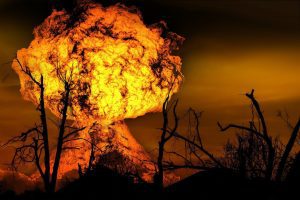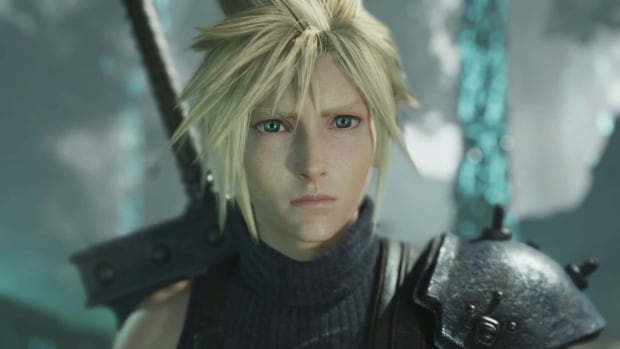
Final Fantasy VII, released in 1997 for the Sony PlayStation, changed the landscape of video gaming.
Sporting new-at-the-time 3D graphics, cinematic cut scenes and a storyline that took more narrative swings than most gamers had ever seen, it was treated as a mass pop culture event. It sold millions of copies, becoming a cult classic that has since spawned dozens of spinoff games and merchandise — as well as reams of tragi-romantic fan fiction.
Now, developer Square Enix is remaking the title as a trilogy, stretching the source material far past its original scope — hopefully with more success than the maligned Hobbit trilogy from the 2010s.
The second instalment, Final Fantasy VII Rebirth, launches this week on the PlayStation 5. It’s a charming love letter to fans of the original — when it doesn’t get in the way of its own storytelling.
Rebirth picks up straight away from 2020’s Final Fantasy VII Remake, the first entry in the confusingly named trilogy.
WATCH | Final Fantasy VII Rebirth trailer:
Cloud Strife, a mercenary with a really big sword and dreamy, moody eyes, has joined up with a small resistance group called Avalanche. They’ve just escaped Midgar, the industrial megacity where all of Remake took place, to search the world for clues about Sephiroth, Cloud’s former mentor with an even longer sword and an ambiguous plan to save and/or destroy the world.
Avalanche is also waging a war against Shinra, the electric power company and de facto government of Midgar. Shinra has been powering the world by extracting a miraculous fuel called Mako from the ground. But turns out Mako is the planet’s very life force, including the souls of the dead — and depleting it means the end of all life.
Ahead on our way
Rebirth‘s scope extends far past that of Remake. Instead of expanding a single large location like Midgar, players can traverse multiple open-world regions — similar to a modern Grand Theft Auto or Assassin’s Creed — each featuring one or more villages or larger cities.
A wide, verdant grasslands is home to laconic village Kalm, while the desert region of Corel houses the Disney-like amusement park The Gold Saucer — and the poor live in the Dustbowl slums underneath.
Players will spend most of their time exploring the game’s towns and surrounding wilderness, and fighting monstrous creatures great and small. The combat system is impressively robust, letting players duke with and dance around enemies as they cast spells or use powerful combat manoeuvres.
Every character feels a little different, letting players customize how they approach most situations. Cloud can counter enemy strikes with his powerful sword, while flower girl-turned-mage Aerith casts support spells from the rear guard.
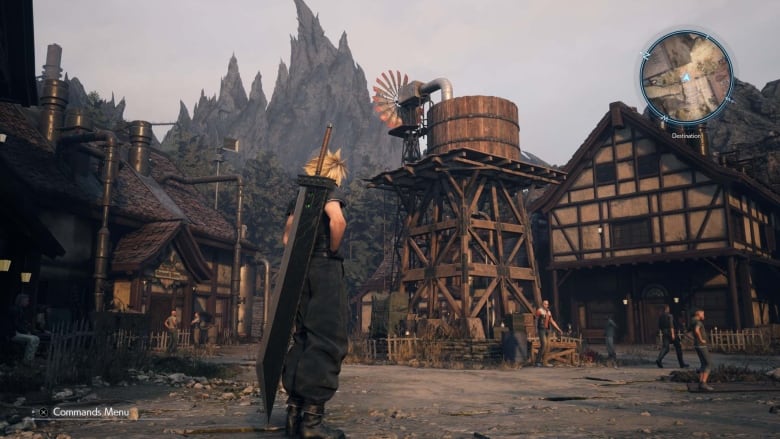
You can follow the main narrative, visiting the most important locations, or put on the brakes to chase down dozens of side jobs. It’s surprising how many of those missions feel pulled straight out of more contemporary games. You’ll be climbing towers like in Assassin’s Creed, and investigating monster attacks like in The Witcher.
Ultimately, these side jobs feel like diversions unrelated to the main narrative, but they flesh out the world in new and surprising ways, and are doled out in chunks so as not to overwhelm the player.
The setup also lays bare Rebirth‘s contradictory tone. This is a game where every main character is grappling with a traumatic past, as they fight a hopeless war against a militaristic corporation.
It’s also a game where you can compete in derby races with ostrich-like birds called chocobos, and control a robotic cat that speaks with a Scottish accent and throws giant dice to conjure magic spells.
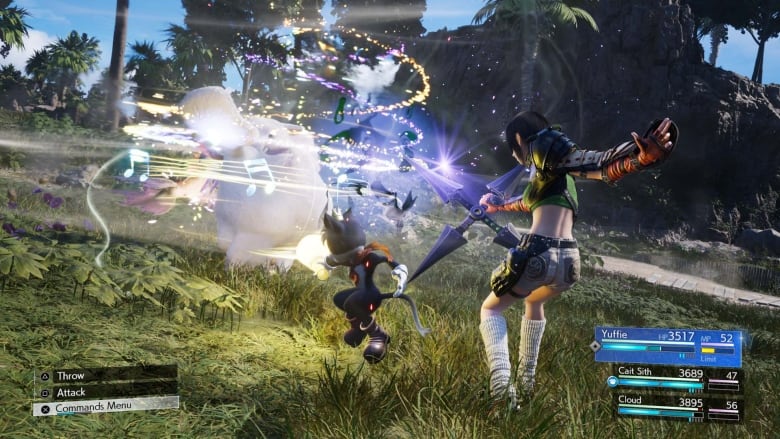
The unpredictable energy is faithful to the 1997 original, and indeed to many other games of that era. It’s something fans may have missed in more recent Final Fantasy games that kept their tone consistent, if dour.
Rebirth‘s most consistent change is its most disappointing. Basically, everything is bigger and louder than before. In The Gold Saucer’s case, this is appropriate, as a once-sparse theme park is blown up into a gleaming, cacophonous dreamscape filled with tourists, gift shops and kitschy attraction rides.
But it also overcrowds once-quieter moments in the original with non-stop battles and cackling villains who lose some of their humanity along the way. Not everything needs to escalate like the last act of a Marvel movie; not every song-and-dance moment needs to overflow with camp.
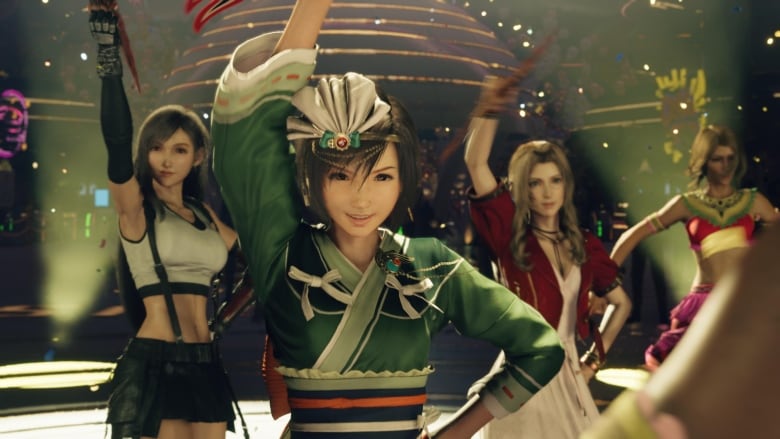
Remaking — and rewriting — the story
Outside of combat, it’s a joy to spend time with fan-favourite characters newly realized in high resolution, and fully voiced with an impressive cast of actors.
John Eric Bentley imbues the gruff rebel leader Barret with humanity, as he struggles to square his justified yet violent insurrection with its effects on his loved ones. And Briana White plays Aerith, a perceptive and sassy character who is far more than her tragic fate.
That fate, of course, is Aerith’s death at the end of the original FFVII‘s first act — graphically skewered by Sephiroth’s two-handed sword.
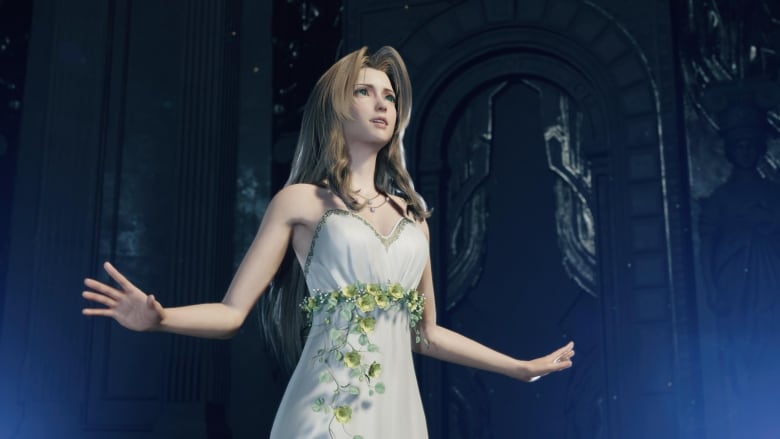
For a certain generation of gamers, it was the first game — and maybe even the first piece of media, period — they had encountered with a major character’s irreversible death. It naturally spawned decades’ worth of untrue rumours that there was a secret code to resurrect her.
Remake‘s story whet fans’ curiosity when it revealed that it wasn’t restricted to following the original’s plot beat for beat; indeed, it suggested that some characters may be actively working against their fates, dabbling with multiple timelines and parallel universes along the way.
Square Enix’s review embargo specifically forbids me from detailing what actually happens at the game’s ending. But creative director Tetsuya Nomura has been known for leading games with convoluted storylines — exemplified by the mind-bending narratives of the Kingdom Hearts series.
Without revealing more, that signature style is ever-present in the game’s excessive, hours-long final stretch. With four years between the release of Remake and Rebirth, fans will likely be debating Rebirth‘s implications without resolution until the third, currently unnamed entry drops.
So should you play it?
For longtime fans of Final Fantasy VII, playing Rebirth is a no-brainer. It’s a gloriously overindulgent roller coaster of emotions, even if its messier moments tend to drag down the total experience.
But there’s also more than enough to entertain newcomers — as long as you’ve played 2020’s Remake first. This is The Empire Strikes Back of the remake trilogy — in more ways than one.
